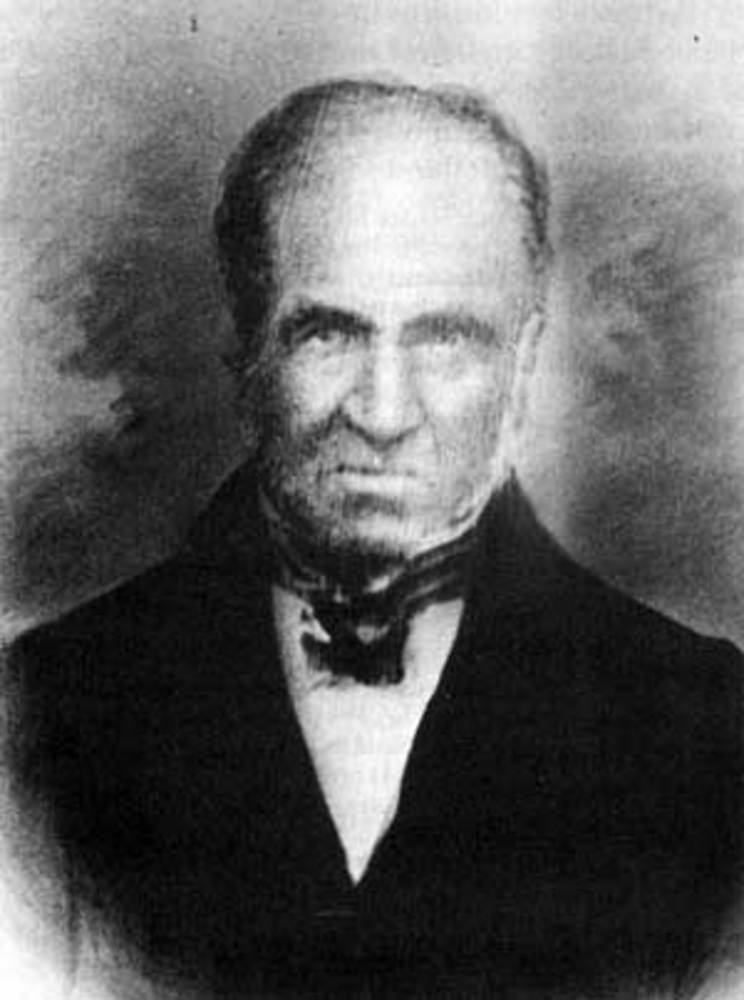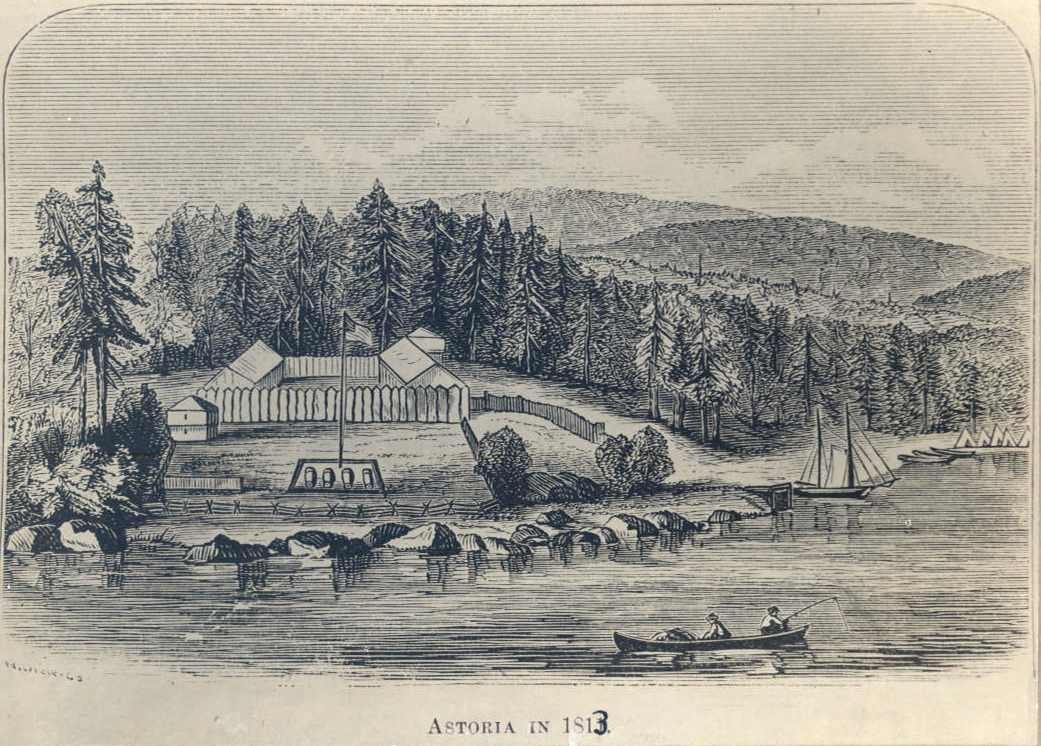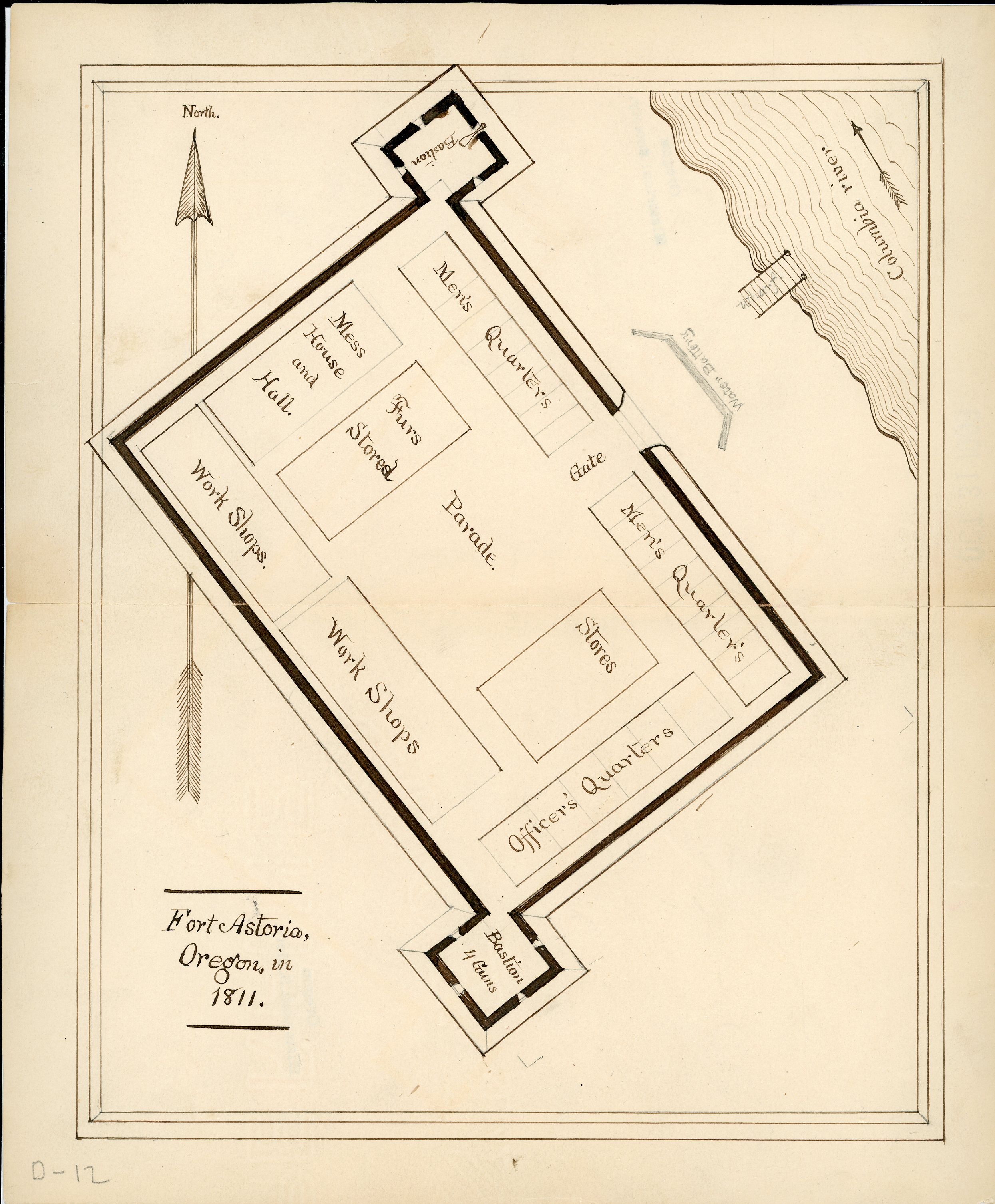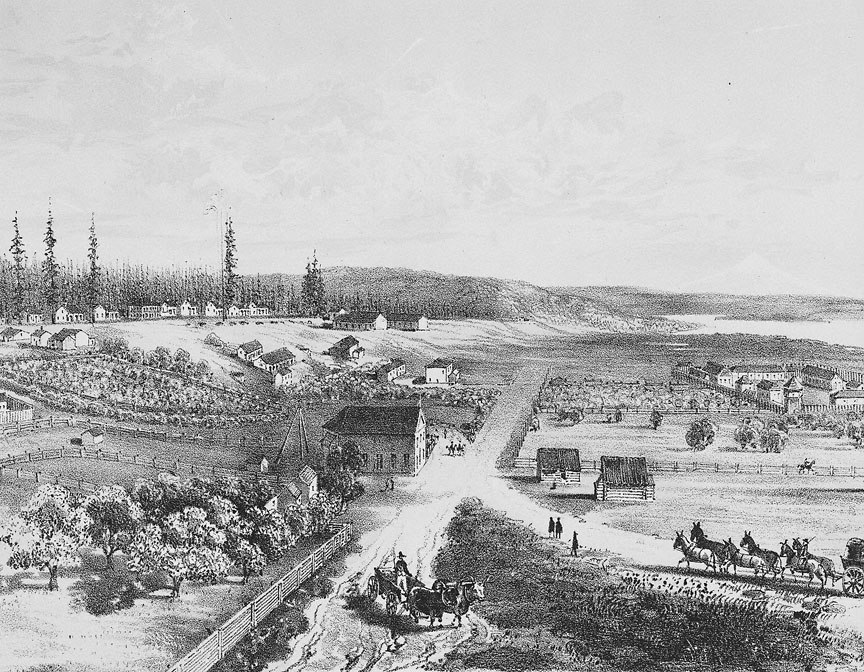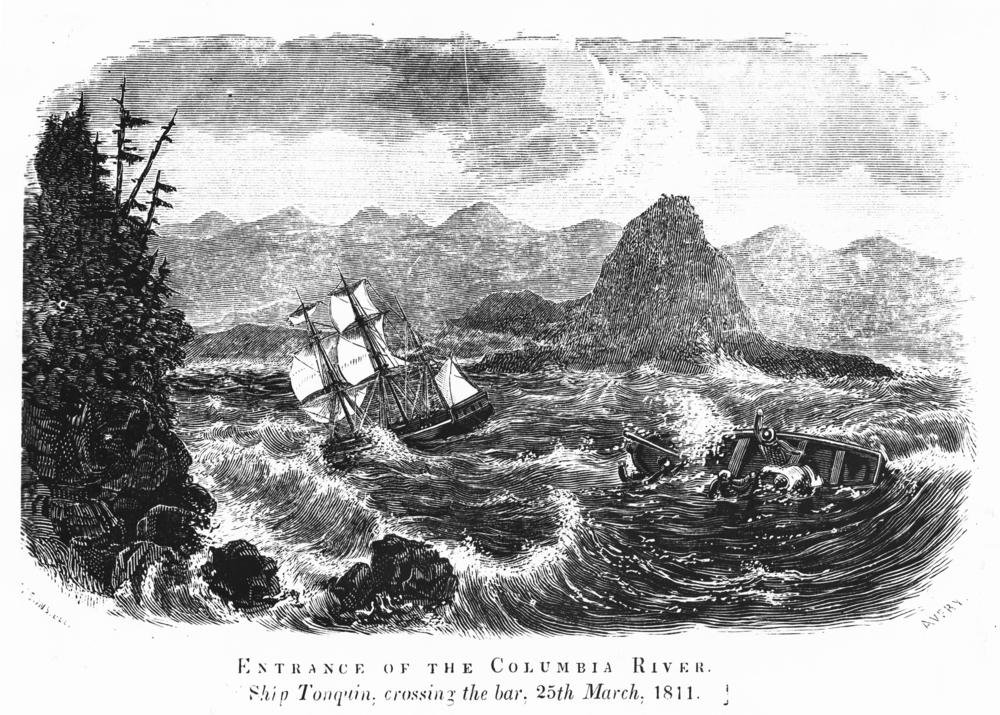Born in the Scottish Highlands, schoolteacher Alexander Ross immigrated to Canada’s St. Lawrence River Valley in 1804. Befriended by fellow Scot Alexander McKay, a veteran Montreal-based fur trader, both men found work in American John Jacob Astor’s boldly conceived Pacific Fur Company enterprise in 1810.
The two voyaged around the Horn on the Tonquin, arriving at the mouth of the Columbia in March 1811. Ross, engaged as a clerk, remained to help build Fort Astoria, while McKay sailed on the doomed ship to commence trade with the Natives of Vancouver Island, a trip that ended with the death of all aboard. As a result, Astor’s plans for a transcontinental, trans-Pacific fur-trade empire were crippled.
Ross was sent more than 400 miles up the Columbia to establish a trading post at the mouth of the Okanogan River. There he married a local Indian woman named Sarah, or Sally. They had a large family and remained devoted partners for the rest of Ross’s life.
In addition to writing copious official correspondence, Ross kept personal journals (now lost). His journals later became the basis for his very popular memoirs, Adventures of the First Settlers on the Oregon or Columbia River (1849) and The Fur Hunters of the Far West (1855).
Staying on after the forced sale of Fort Astoria to the British-owned North West Company during the War of 1812, Ross served as that firm’s second-in-command at Fort George (Astoria). Later promoted to chief trader at Fort Kamloops on the Thompson River (in present-day British Columbia), in 1818 Ross was placed in command of the North West Company's new Fort Nez Perce, strategically situated on the east bank of the Columbia about one-half mile above the mouth of the Walla Walla River.
Following the amalgamation of the company with the Hudson's Bay Company in 1821, HBC Governor George Simpson persuaded Ross to remain on the scene for a few more years. Ross led the 1824 Snake Country Brigade out of Flathead Post to explore and trap the streams of western Montana. Anxious about his health and concerned for the education of his sons, he left the Pacific Northwest for the HBC’s Red River settlement (present-day Winnipeg). There he helped found the colony’s Presbyterian church and began philanthropies to aid the growing number of displaced Indian and Métis inhabitants.
Although criticized by some colleagues for writing official reports "full of marvelous nonsense," Alexander Ross has earned lasting recognition as a close observer of Native cultures and the fur-trade society. Even with their embellishments and exaggerations (likely due, at least in part, from being written years after the fact), Ross's memoirs remain indispensable sources on the history of the early Oregon Country.
-
![]()
Alexander Ross.
Archives of Manitoba, Ross, Alexander 4 (N21467)
-
![Earliest known illustration of Fort Astoria, by Gabriel Franchere, employed by Astor,]()
Fort Astoria, 1813.
Earliest known illustration of Fort Astoria, by Gabriel Franchere, employed by Astor, Courtesy Oreg. Hist. Soc. Research Library, OrHi51
Related Entries
-
![Astor Expedition (1810-1813)]()
Astor Expedition (1810-1813)
The Astor Expedition was a grand, two-pronged mission, involving scores…
-
![Fort George (Fort Astoria)]()
Fort George (Fort Astoria)
Fort George was the British name for Fort Astoria, the fur post establi…
-
![Fur Trade in Oregon Country]()
Fur Trade in Oregon Country
The fur trade was the earliest and longest-enduring economic enterprise…
-
![Hudson's Bay Company]()
Hudson's Bay Company
Although a late arrival to the Oregon Country fur trade, for nearly two…
-
![North West Company]()
North West Company
First organized in 1779 by a small group of Canadian fur traders based …
-
![Pacific Fur Company]()
Pacific Fur Company
The Pacific Fur Company, employee Alexander Ross wrote in 1849, was “an…
-
![Tonquin (ship)]()
Tonquin (ship)
The Tonquin, built in 1807, was described by Edmund Fanning, its builde…
Related Historical Records
Map This on the Oregon History WayFinder
The Oregon History Wayfinder is an interactive map that identifies significant places, people, and events in Oregon history.
Further Reading
Ronda, James. Astoria and Empire. Lincoln: University of Nebraska Press, 1990.
Stewart, Edgar. “Alexander Ross." In Mountain Men and the Fur Trade of the Far West: Biographical sketches of the participants by scholars of the subject and with introductions by the editor. Vol. 6. Edited by Leroy R. Hafen. Norman, Okla.: Arthur H. Clark, 1965-1972.

